Homewares we loved in the 1950s you don’t get any more
1950s favourites from tech to tableware
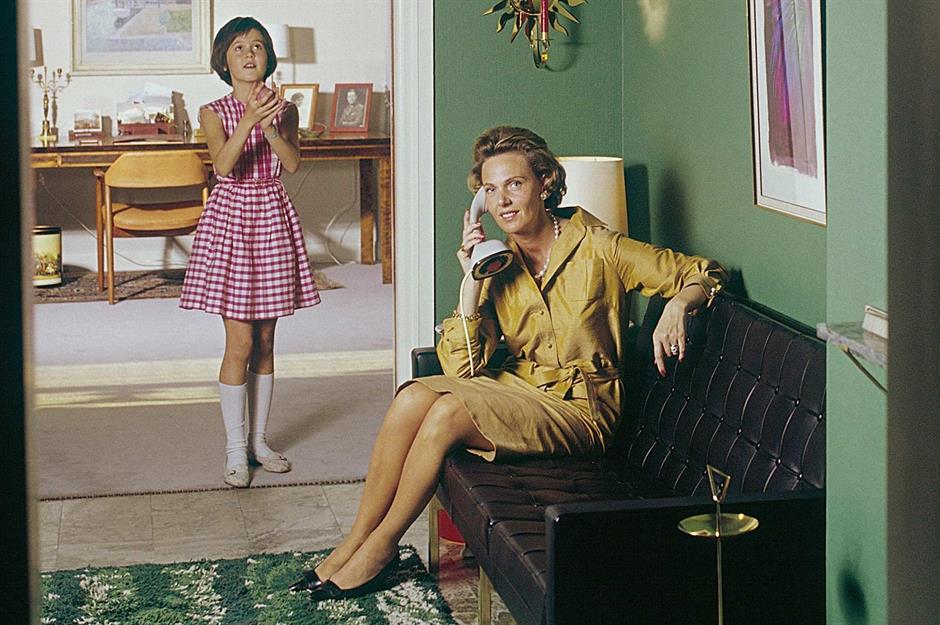
Step inside the stylish homes of the 1950s and you’ll find a fascinating mix of practicality and flair. From bright wall-to-wall carpets and plaid wallpaper to ingenious gadgets and quirky furniture, this was a decade when optimism and consumer choice shaped how we lived. Some of these homewares feel charmingly retro today, while others have vanished altogether.
Click or scroll to discover the everyday items that once defined post-war domestic life but are rarely seen now...
Frilly vanity tables
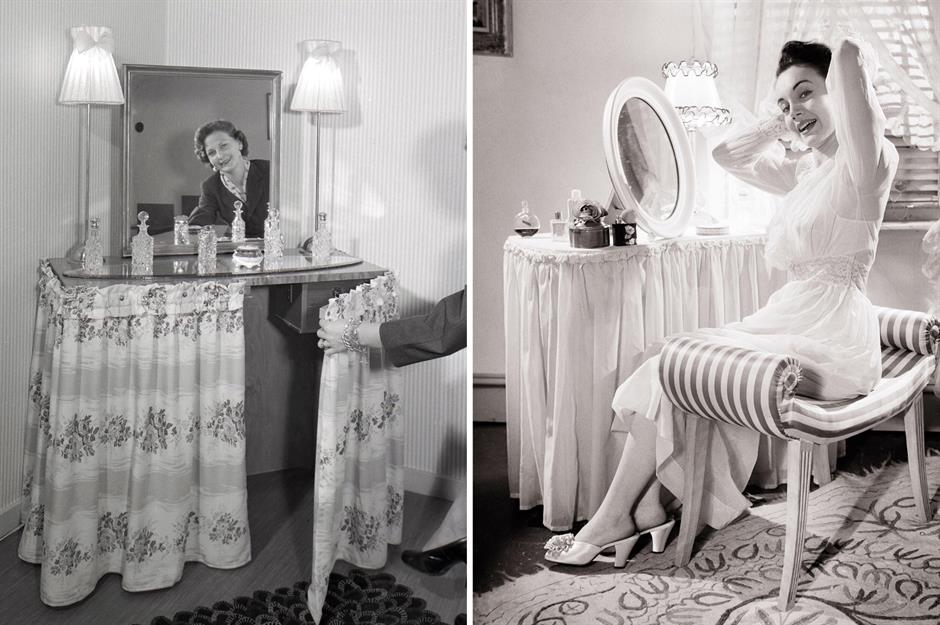
In the 1950s, a dressing table draped in fabric was the height of bedroom elegance. Often trimmed with frills or floral skirts, these vanities hid practical storage beneath and doubled as a stage for perfume bottles, hairbrushes, and powder compacts.
They reflected a decade when homes were becoming more comfortable after post-war austerity, with women encouraged to embrace glamour in their daily routines. Paired with soft lighting and matching stools, the vanity table was both practical and aspirational, symbolising domestic femininity in a prosperous new era.
Extendable cutting boards
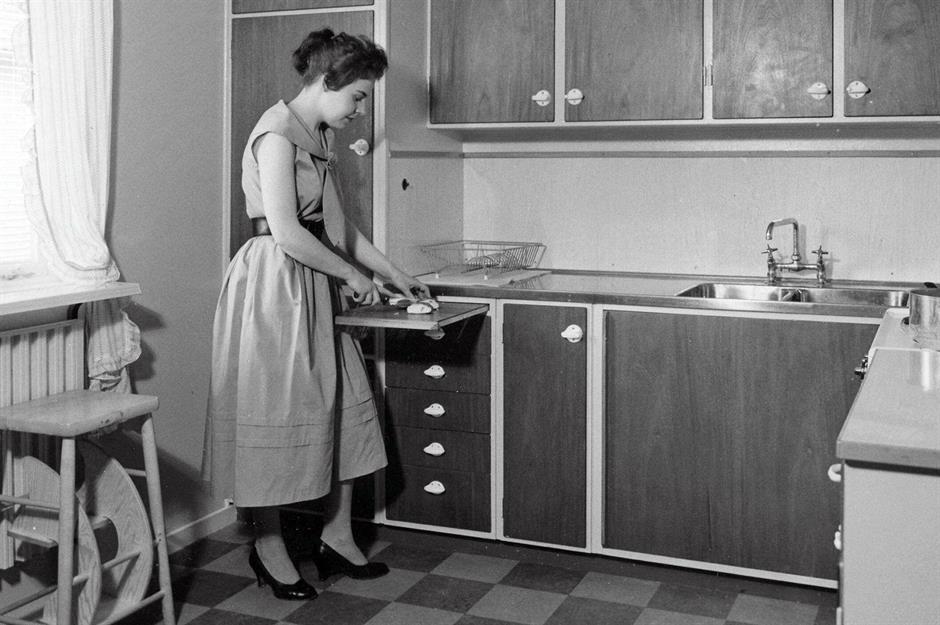
Fitted kitchens were becoming standard in the 1950s, but storage was often tight, so designers came up with clever space-saving solutions. Extendable cutting boards, which slid neatly out from beneath the countertop, provided an instant surface for slicing bread or preparing vegetables without taking up precious workspace.
Popular in European and American kitchens alike, they were especially useful as families embraced more convenience foods and home baking in the post-war boom. Practical and multifunctional, they’re one invention many argue deserves a comeback today.
Plaid wallpaper
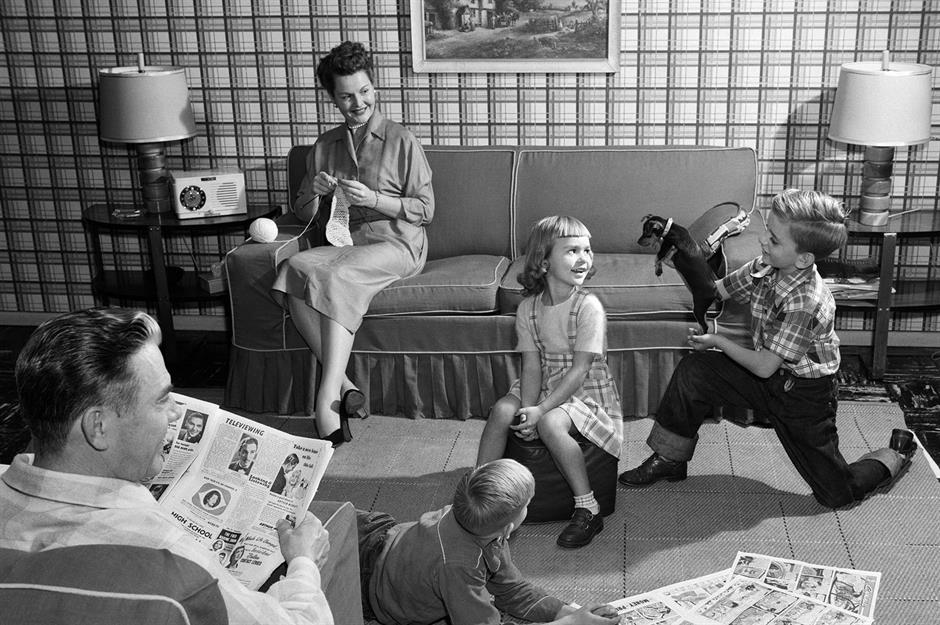
Bold wallpaper was a hallmark of 1950s interiors, with plaid and check patterns bringing energy into family living rooms. Typically printed in earthy browns, moss greens, and mustard yellows, or in brighter pastel blues and pinks. These designs reflected the decade’s shift towards modern, cheerful homes after years of post-war rationing.
Affordable and easy to hang thanks to advances in paper production, patterned walls offered instant impact. Plaid in particular suggested cosy domesticity, echoing traditional fabrics but giving them a fresh, mid-century twist for suburban settings.
Pyrex oven-to-table ware
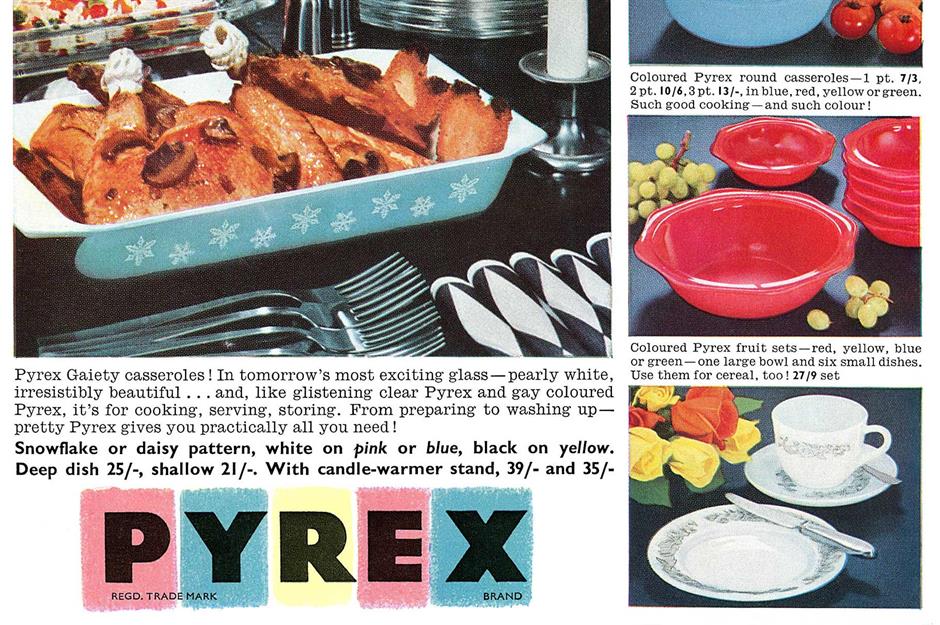
Pyrex became a kitchen essential in the 1950s, when colourful ranges transformed the once-humble heatproof glass into a stylish choice for modern homes.
New patterns like Snowflake and Daisy appeared in pastel pinks, blues, and yellows, brightening up dining tables and sideboards. The dishes were practical, too, moving from oven to table with ease, at a time when entertaining friends and neighbours was central to suburban life. Affordable, cheerful and endlessly useful, Pyrex symbolised the optimism and convenience of mid-century domestic living.
Melamine picnic sets
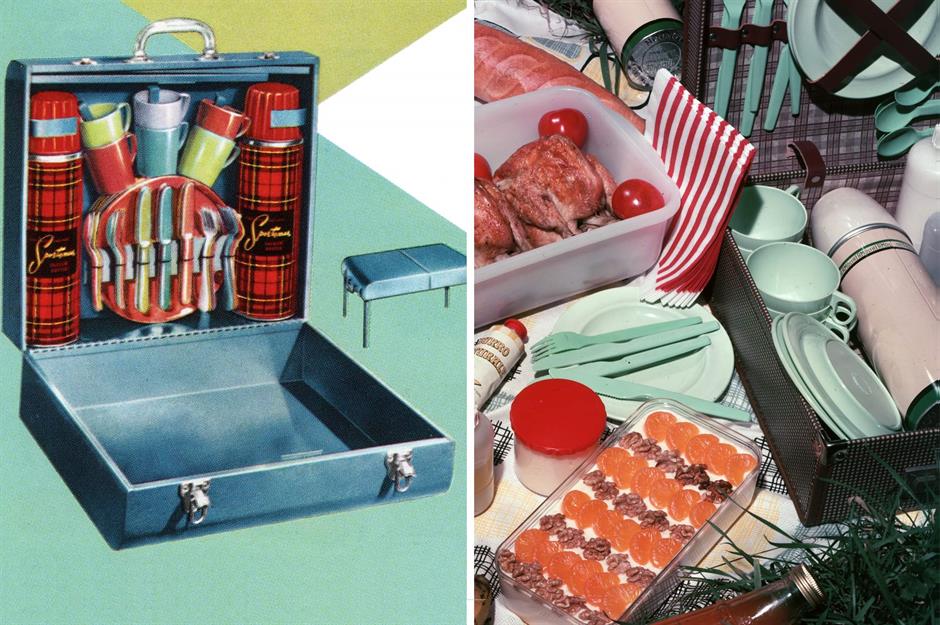
By the mid-1950s, melamine was marketed as the wonder material of modern dining – lightweight, colourful, and virtually unbreakable. Picnic hampers filled with stackable plates, cups, and cutlery became the height of outdoor leisure, perfectly suited to the decade’s growing love of car travel and suburban day trips.
Often paired with tartan Thermos flasks and neatly packed into sturdy hamper cases designed with straps and different sections for cutlery and even condiments, these sets captured the cheerful, practical spirit of post-war family life.
Table freezers
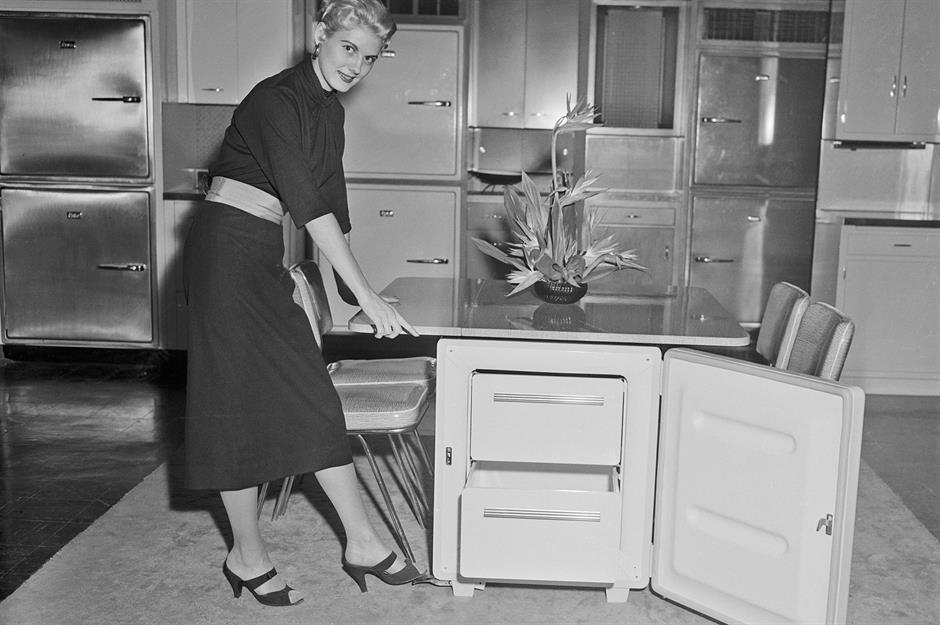
Not every 1950s invention stood the test of time, and the table freezer is a perfect example. Marketed as a space-saver for small homes and apartments, this curious hybrid combined a dinette table with built-in freezer drawers.
Produced by companies like Revco, it reflected the decade’s obsession with convenience and multifunctional design as freezers became more accessible to middle-class households. While the idea of reaching under the table for frozen goods didn’t catch on, it captured the spirit of mid-century experimentation in domestic life.
Ericofon
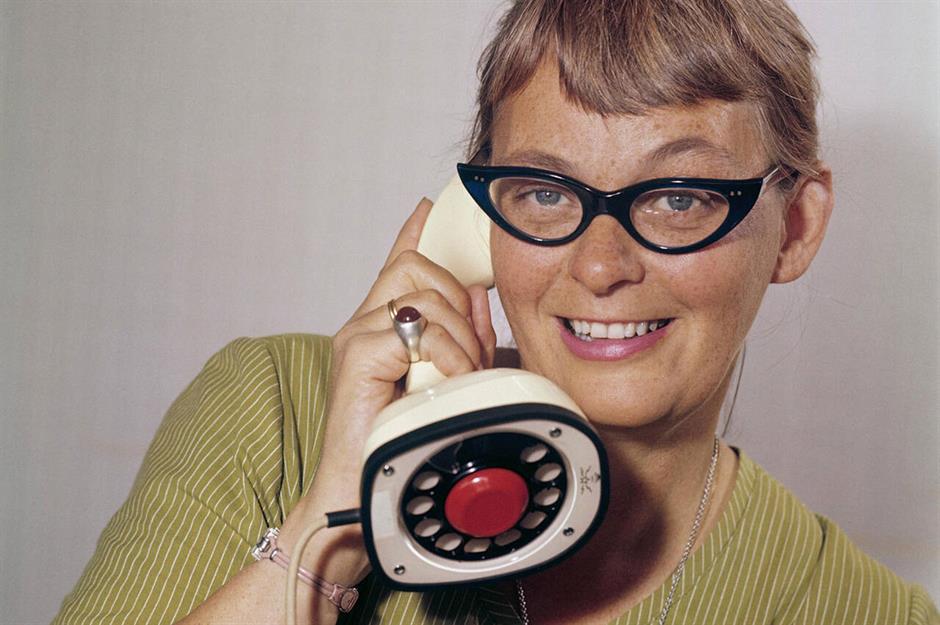
Designed by Ericsson in Sweden and first sold in the mid-1950s, the Ericofon was a telephone like no other. Nicknamed the “cobra” for its curved silhouette, it was the first model to combine the dial and handset into a single unit.
Made from brightly coloured plastic, it looked strikingly modern in an age when most phones were still heavy, black, and boxy. Compact and futuristic, the Ericofon became a design icon of the decade and is now a sought-after collector’s item of mid-century style.
Sunken conversation pits
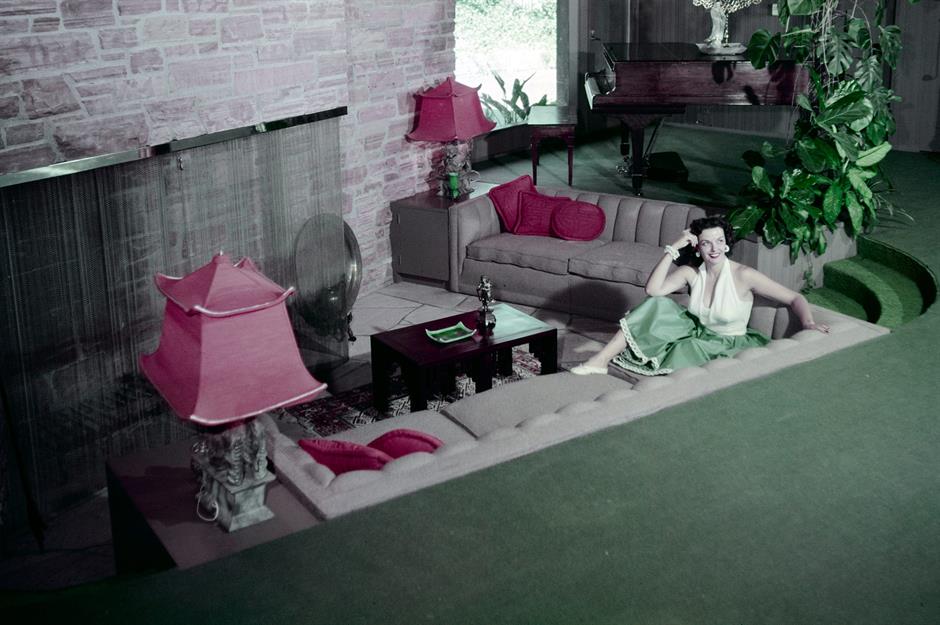
The conversation pit, or sunken living area, emerged in the 1950s as modernist architects experimented with open-plan layouts. By lowering a section of the floor and surrounding it with built-in seating, they created intimate spaces that encouraged socialising.
The Miller House in Columbus, Indiana, is often cited as an early example, but the trend soon spread to fashionable mid-century homes across the US, where they would often appear alongside bold stone fireplaces, wood panelling, and brightly coloured textiles.
Semi-automatic washing machines
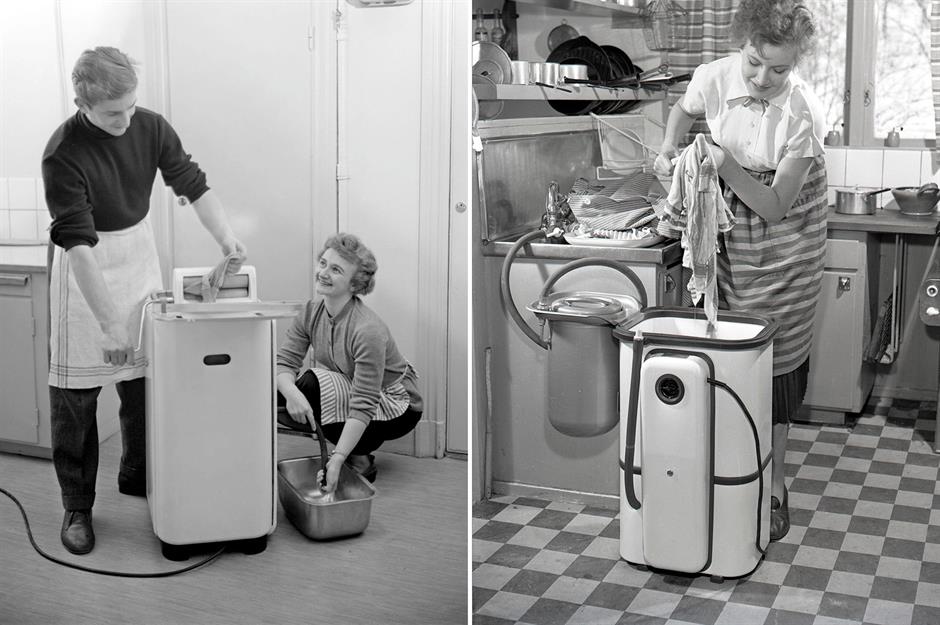
By the 1950s, washing machines were becoming more common in households, but many were still a far cry from the fully automatic models we know today. Some had to be wheeled to the sink and connected to a tap, while others featured a built-in mangle to manually squeeze water from clothes.
These models were labour-intensive, often requiring several steps to wash, rinse, and wring garments, but they still represented progress from traditional hand-washing and would have saved time and effort around the house.
‘Bachelor’s column’
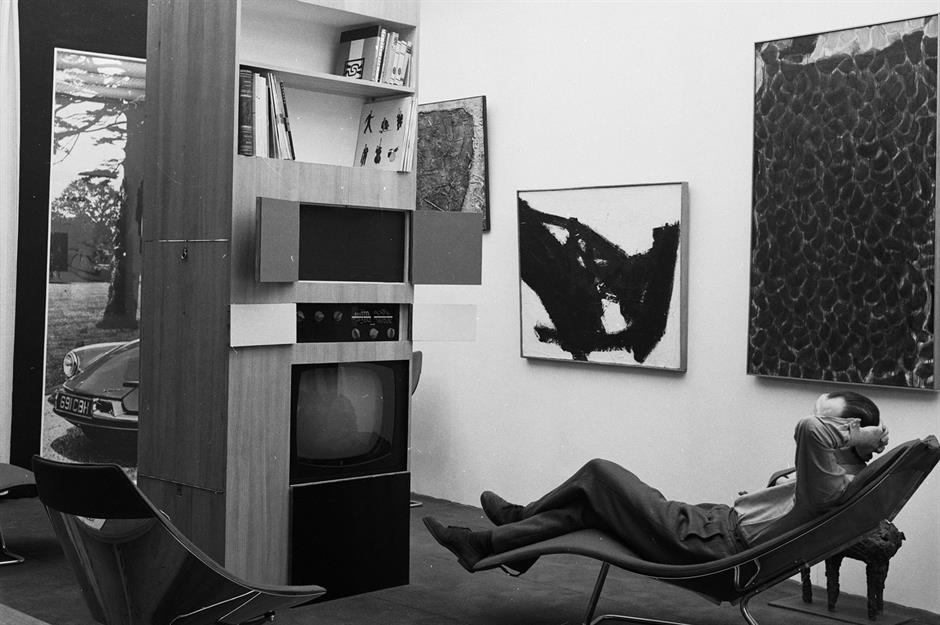
Unveiled at the 1958 Ideal Home Exhibition in London, the so-called bachelor’s column was an ambitious piece of furniture that squeezed a cocktail cabinet, television, bookshelf, writing desk, radio, and lighting controls into a nine-foot-high (2.7m) tower.
Designed for compact city living, it reflected the post-war fascination with futuristic multifunctional design, even if few households could afford or accommodate one. Though never a mainstream success, this inventive stacked system can be seen as a quirky ancestor of the modern entertainment unit and media storage towers.
Portable record players
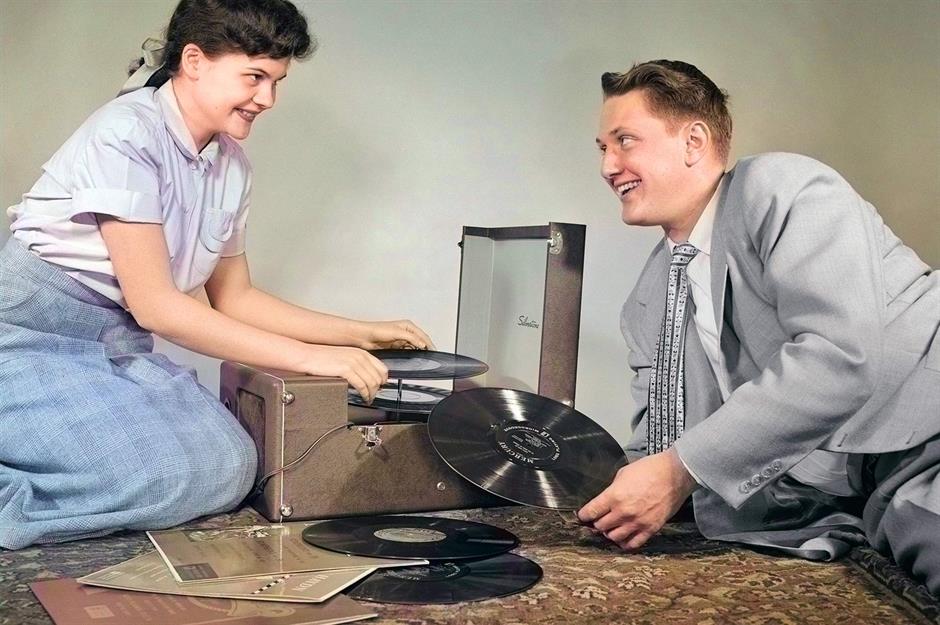
In the 1950s, portable phonographs became a must-have for teenagers discovering the new world of rock ’n’ roll. Affordable, lightweight, and compact, they could be carried from room to room.
It gave young people the freedom to listen away from the family’s main console in the living room – and perhaps sneak in some scandalous new sounds. With LPs and 45s booming, hits like Rock Around the Clock by Bill Haley and Jailhouse Rock by Elvis Presley thrilled teenage consumers, even if their parents were less impressed.
Barometers
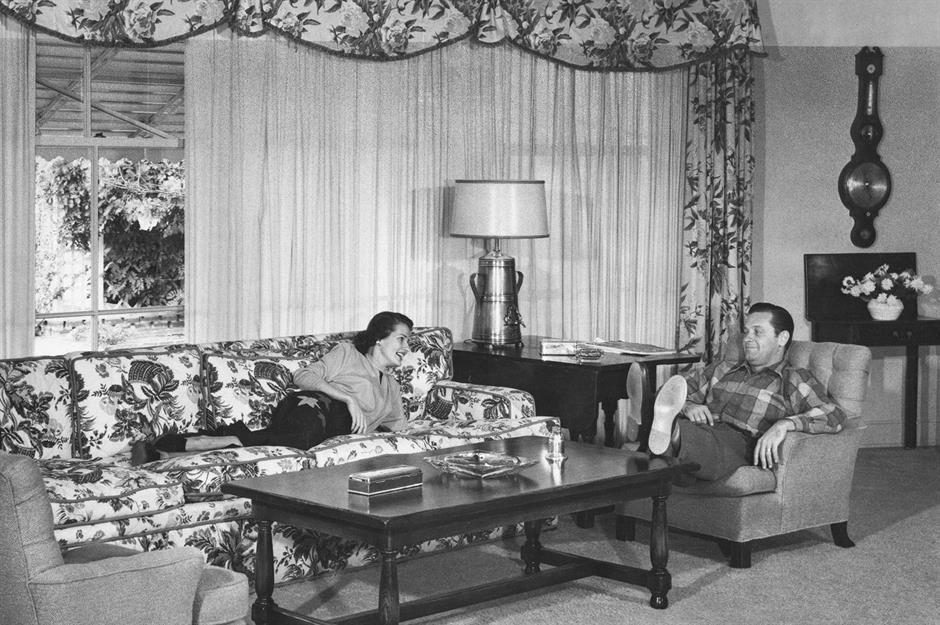
Once a staple in mid-century homes, the wall-mounted barometer was both decorative and functional. In the 1950s, when daily weather forecasts weren’t as accessible as today, many families relied on these instruments to predict changes in air pressure and, by extension, the weather.
Often housed in polished wood or brass, they added a traditional touch to otherwise modern interiors. Though their origins go back centuries, barometers were still very common in the living rooms of the era, along with grandfather clocks.
Radio alarm clocks

While lots of people owned TVs in the 1950s, the family radio was still at the heart of home entertainment. Invented in 1949, the clock radio was a post-war upgrade that became popular in 1950s homes, letting families wake up to music or the news instead of a harsh buzzer.
They were affordable enough for many households, though still considered aspirational and a modern treat. By this time, radios were no longer limited to a single console in the living room – smaller sets were common in bedrooms and kitchens too, keeping families entertained throughout the day.
Carpet sweeper
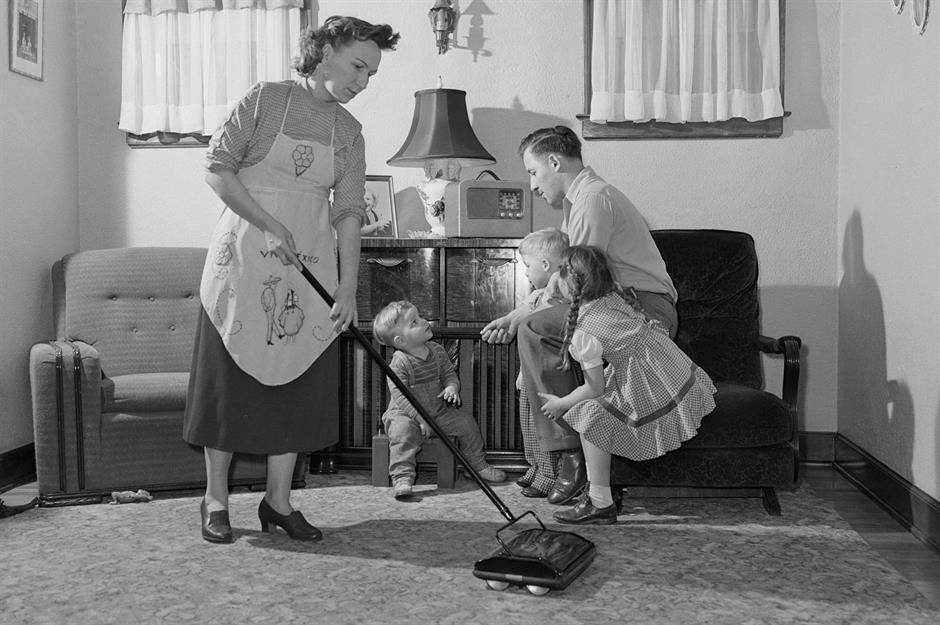
Before vacuum cleaners became affordable for most families, carpet sweepers were a common sight in 1950s homes. Compact, lightweight, and requiring no electricity, they used rotating brushes to pick up crumbs and dust – perfect for a quick tidy-up in the living room.
The design was patented by Melville R. Bissell of Grand Rapids, Michigan in 1876. Bissell began selling carpet sweepers in 1883. Many households still relied on them even after electric vacuums appeared, as they were quieter, cheaper, and easier to handle.
Circular day beds
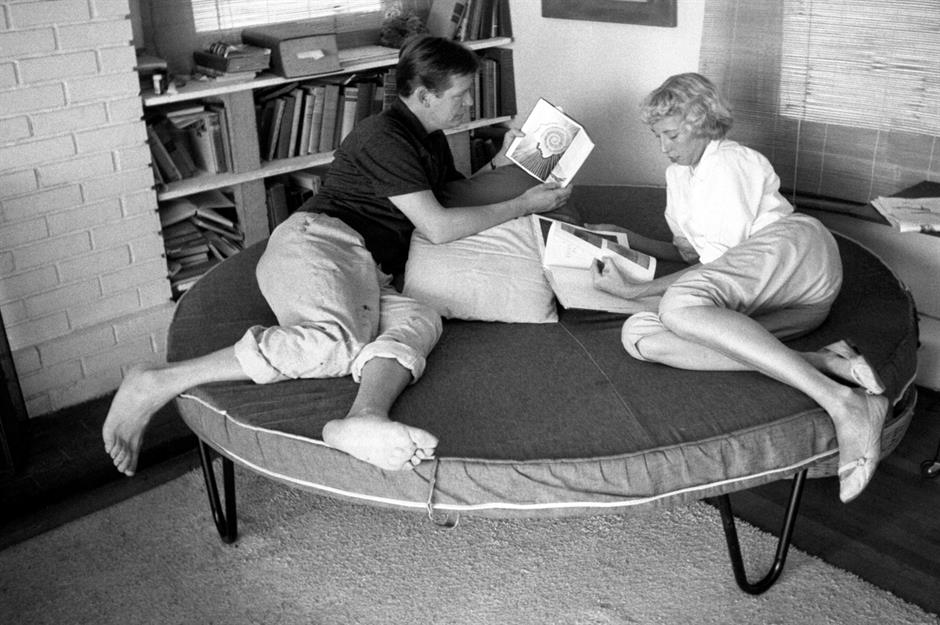
Round or circular day beds were a striking piece of mid-century furniture that briefly captured the imagination of 1950s designers. Combining the comfort of a bed with the sociability of a sofa, they suited the decade’s more relaxed approach to living spaces, where entertaining and lounging often blended together.
Upholstered in bold fabrics or simple neutrals, they made a sculptural centrepiece in a modern home. Though they never became a mainstream staple, these eye-catching designs reflected the era’s playful take on home comfort.
Bright wall-to-wall carpets
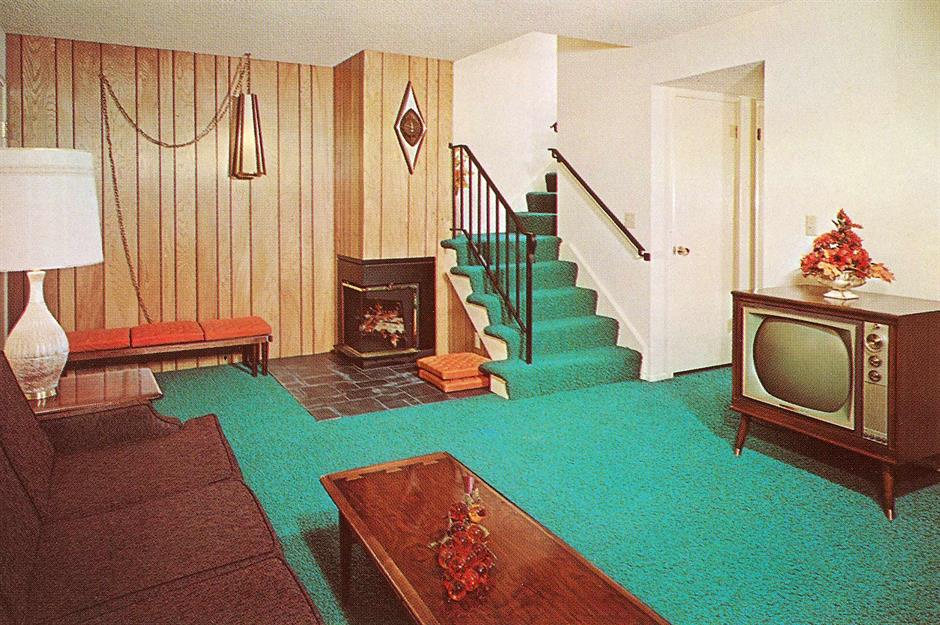
Wall-to-wall carpeting surged in popularity during the 1950s, transforming living rooms and basements with bold, bright colours. Shades like turquoise, lime green, and deep red were especially fashionable, offering a cosy, modern alternative to polished wood floors or smaller rugs.
The economic boom meant more families could afford to cover whole rooms, often pairing carpets with matching upholstery or drapes for a coordinated look. While once seen as the height of comfort and style, these vivid carpets have since been replaced by subtler tones and finishes.
Electric bar heaters
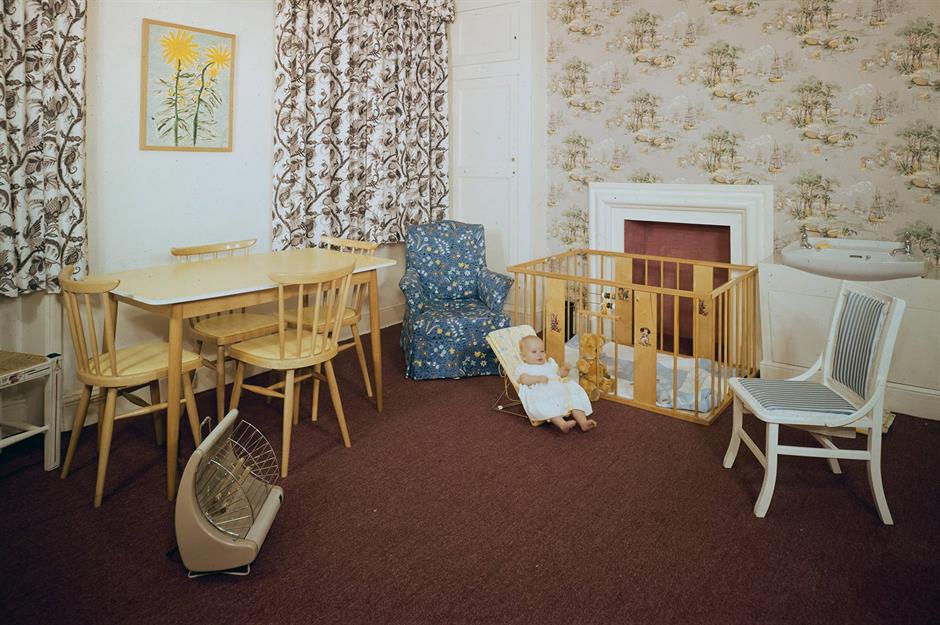
Before central heating was widespread, many 1950s households relied on small electric bar heaters to keep individual rooms warm. Lightweight and portable, they featured glowing bars that radiated intense heat, often placed close by in living or dining areas during colder months.
While they offered instant warmth, they were also notoriously inefficient and sometimes hazardous, with safety concerns around exposed heating elements. Still, in an era when coal fires were fading and modern gas systems were not yet universal, these heaters were a practical solution.
Typewriters
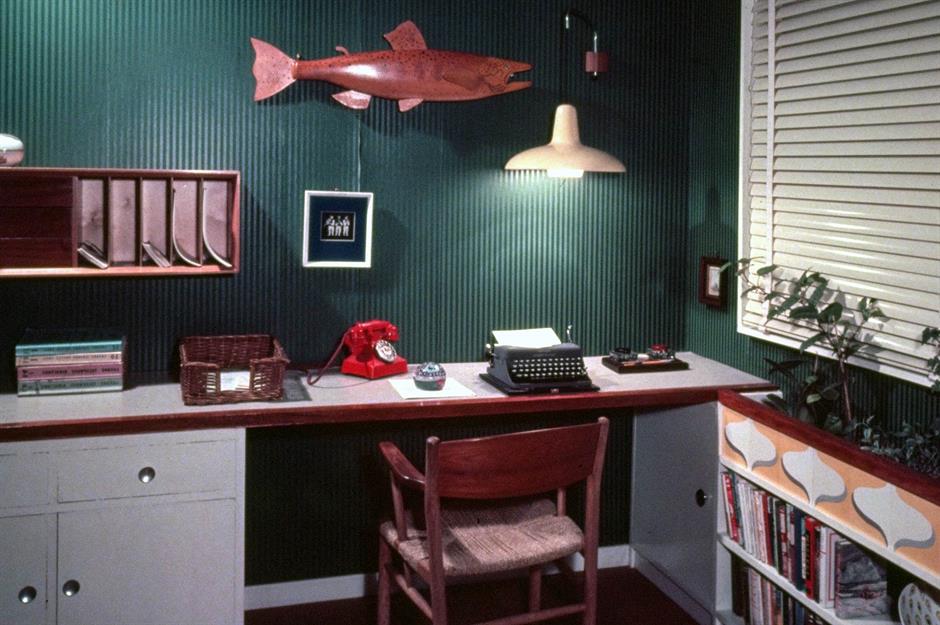
In the 1950s, before home computers, typewriters were the essential tool for correspondence, working from home, and even running a household. Compact portable models made it easier than ever to set up a study or office corner at home, often paired with a rotary phone and tidy filing shelves.
They reflected the era’s growing emphasis on efficiency and organisation in domestic life, as more families enjoyed the benefits of post-war prosperity. For many, the rhythmic clatter of the typewriter was the sound of modern productivity.
Brass plates and accessories
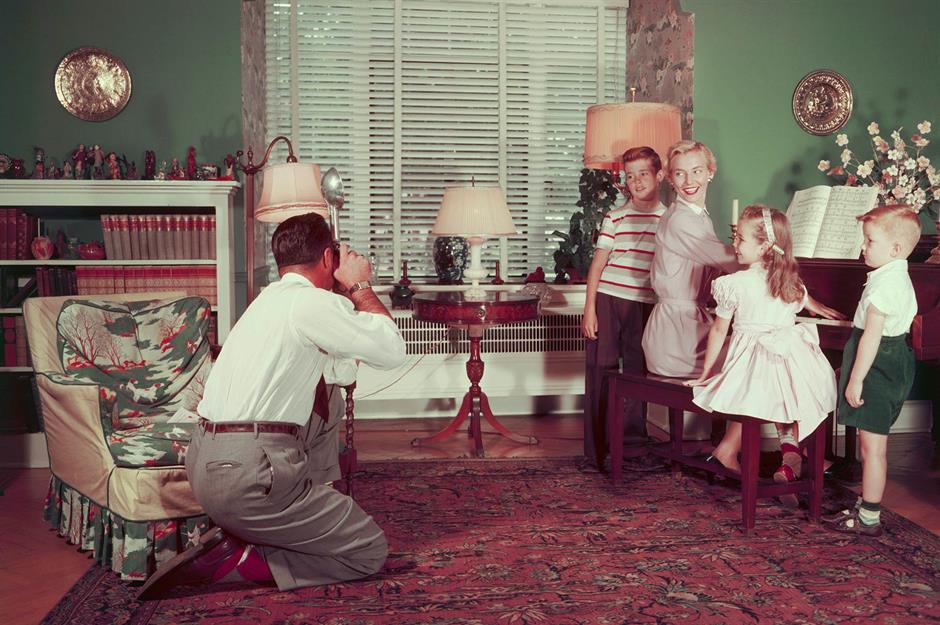
Brassware was a familiar sight in 1950s homes, from wall-hung plates to gleaming ornaments on mantelpieces and coffee tables. These polished accents reflected the era’s fondness for tradition and a touch of formality, even as sleeker modernist styles grew in popularity.
They were often paired with floral fabrics, patterned rugs, and dark wood furniture, adding warmth and shine to otherwise dull interiors. Many families collected brass animals or birds, often bought as souvenirs or received as gifts, proudly displayed in the 'best room' reserved for visitors.
Loved this? Explore more retro homeware and interiors
Comments
Be the first to comment
Do you want to comment on this article? You need to be signed in for this feature